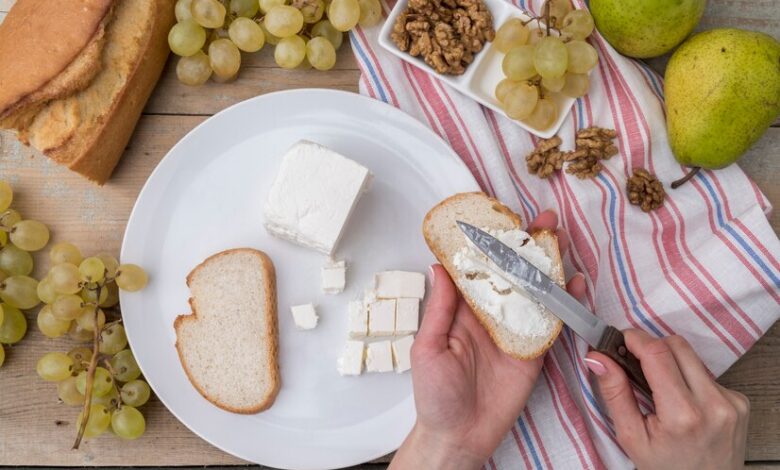Exploring the World of White Cheese Curds: From Farm to Table

Cheese enthusiasts around the world know the satisfaction of indulging in a delectable cheese platter, but one type of cheese often stands out among the rest: white cheese curds.
These delicious, squeaky morsels have gained popularity not only in their places of origin but also in various culinary scenes globally. In this comprehensive guide, we’ll delve into the fascinating journey of white cheese curds, from their humble beginnings on the farm to gracing the tables of cheese lovers worldwide.
Understanding White Cheese Curds
White cheese curds, sometimes simply referred to as “curds,” are a type of fresh cheese known for their mild flavor and distinctive squeak when bitten into. They are a staple in the dairy-rich regions of the world, particularly in areas with a strong cheese-making tradition like Quebec, Canada, and parts of the United States, including Wisconsin.
The making of white cheese curds begins with milk, usually sourced directly from local dairy farms. The milk undergoes a process of pasteurization before specific bacteria cultures and enzymes, such as rennet, are added to initiate the coagulation process.
Once the milk has coagulated, it is cut into small, uniform curds, which are then heated and stirred to expel the whey. The resulting curds are then salted and pressed into molds, forming the characteristic shape and texture of white cheese curds.
From Farm to Factory: The Production Process
White cheese curds are often produced on small-scale dairy farms or in dedicated cheese-making facilities. These facilities vary in size and capacity, with some family-owned farms handcrafting small batches of curds, while others operate large-scale production lines to meet the demand of consumers.
The production process typically begins with the arrival of fresh milk at the cheese-making facility. Quality milk is essential for producing superior cheese curds, so many producers prioritize sourcing milk from local dairy farms known for their high standards of animal care and milk quality. Once the milk has been received, it undergoes a series of steps, including pasteurization, culturing, coagulation, cutting, cooking, draining, and pressing.
Throughout each stage of the process, cheese-makers employ their expertise and artisanal techniques to ensure the desired flavor, texture, and quality of the final product. Attention to detail is paramount, as even minor variations in temperature, acidity, or timing can significantly impact the characteristics of the cheese curds.
Once the curds have been formed and pressed, they are left to age for a short period, typically a few days to a week, depending on the desired flavor profile. Some producers may choose to package the curds immediately for consumers who prefer their cheese curds fresh and squeaky, while others may age the curds slightly longer to develop a more complex flavor profile.
Regional Varieties and Culinary Uses
White cheese curds come in various shapes, sizes, and flavors, depending on their regional origins and production methods. In Quebec, Canada, for example, cheese curds are a key ingredient in the iconic dish poutine, where they are layered over crispy fries and smothered in rich gravy.
The heat from the fries and gravy causes the cheese curds to soften without melting completely, resulting in a delightful combination of textures and flavors. In the United States, particularly in the state of Wisconsin, white cheese curds are celebrated as a beloved snack food.
They are often enjoyed on their own, either fresh or breaded and deep-fried for a crunchy exterior and gooey interior. Cheese curds are also a popular topping for salads, pizzas, and burgers, adding a creamy, tangy element to savory dishes.
Beyond North America, white cheese curds have also found their way into global cuisine, with chefs and home cooks alike incorporating them into a variety of recipes. From omelets and quesadillas to soups and sandwiches, the versatility of cheese curds knows no bounds.
Health Benefits and Nutritional Value
Like all dairy products, white cheese curds are a rich source of essential nutrients, including calcium, protein, and vitamins A and B12. Calcium is vital for maintaining strong bones and teeth, while protein is essential for muscle growth and repair.
Additionally, the probiotics found in cheese curds may contribute to gut health and digestion. However, it’s important to consume white cheese curds in moderation, as they are also high in saturated fat and sodium.
Opting for low-fat or reduced-sodium varieties can help mitigate some of these concerns while still allowing you to enjoy the delicious taste and texture of cheese curds.
Sustainability and Ethical Considerations
As consumers become increasingly conscious of the environmental and ethical implications of their food choices, many are seeking out cheese producers that prioritize sustainability and animal welfare.
Fortunately, many small-scale dairy farms and artisanal cheese-makers adhere to sustainable practices, such as pasture-based farming, rotational grazing, and waste reduction.
By supporting local cheese producers who prioritize sustainability and ethical animal husbandry, consumers can feel good about their cheese curd purchases while enjoying a delicious and wholesome product.
Conclusion
White cheese curds are more than just a tasty snack—they’re a culinary tradition with deep roots in dairy-producing regions around the world. From the farm to the table, the journey of cheese curds is a testament to the artistry and craftsmanship of cheese-making. Whether enjoyed fresh, fried or as a topping on your favorite dish, white cheese curds are sure to delight your taste buds and leave you craving more. So the next time you’re in the mood for a cheesy treat, consider exploring the world of white cheese curds—you won’t be disappointed.



